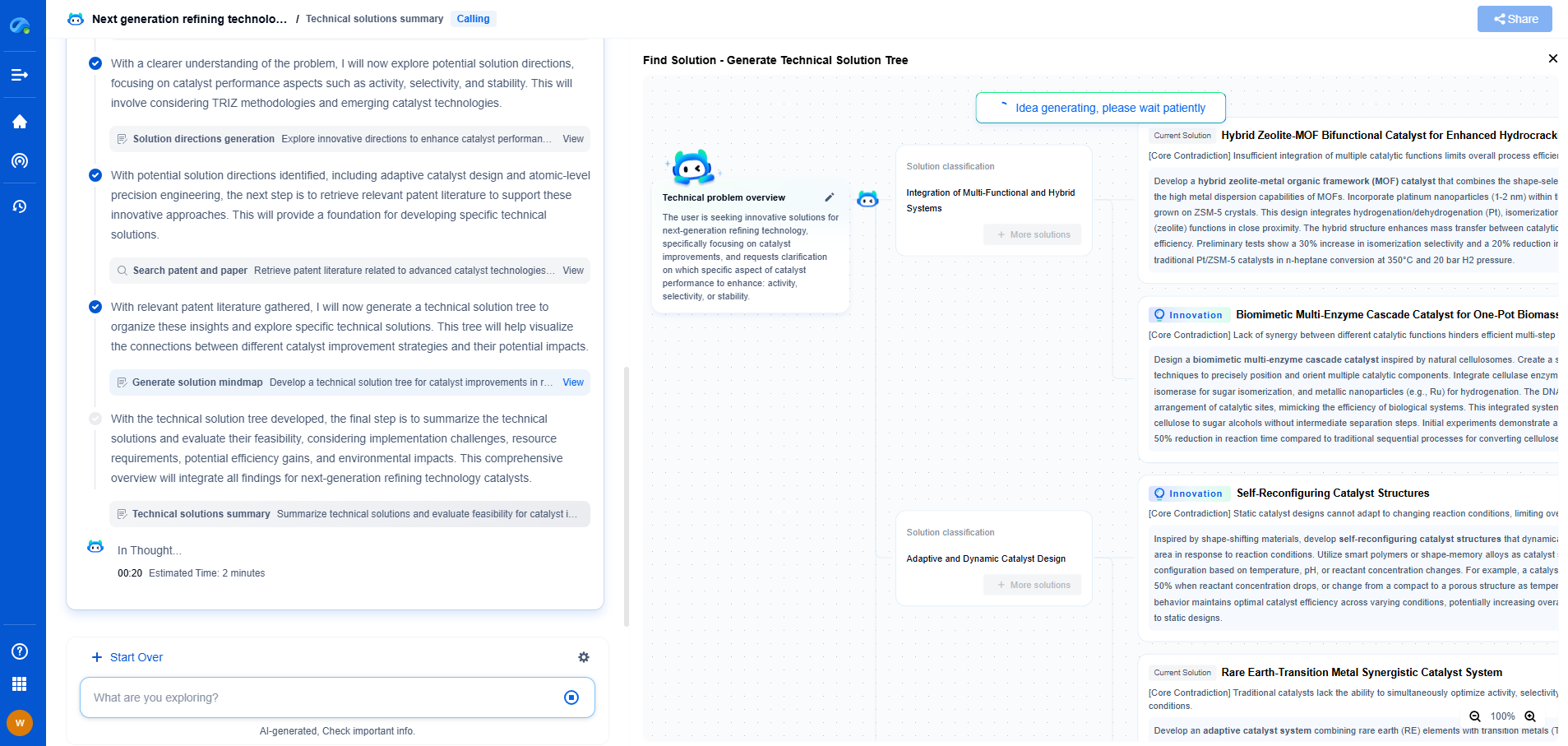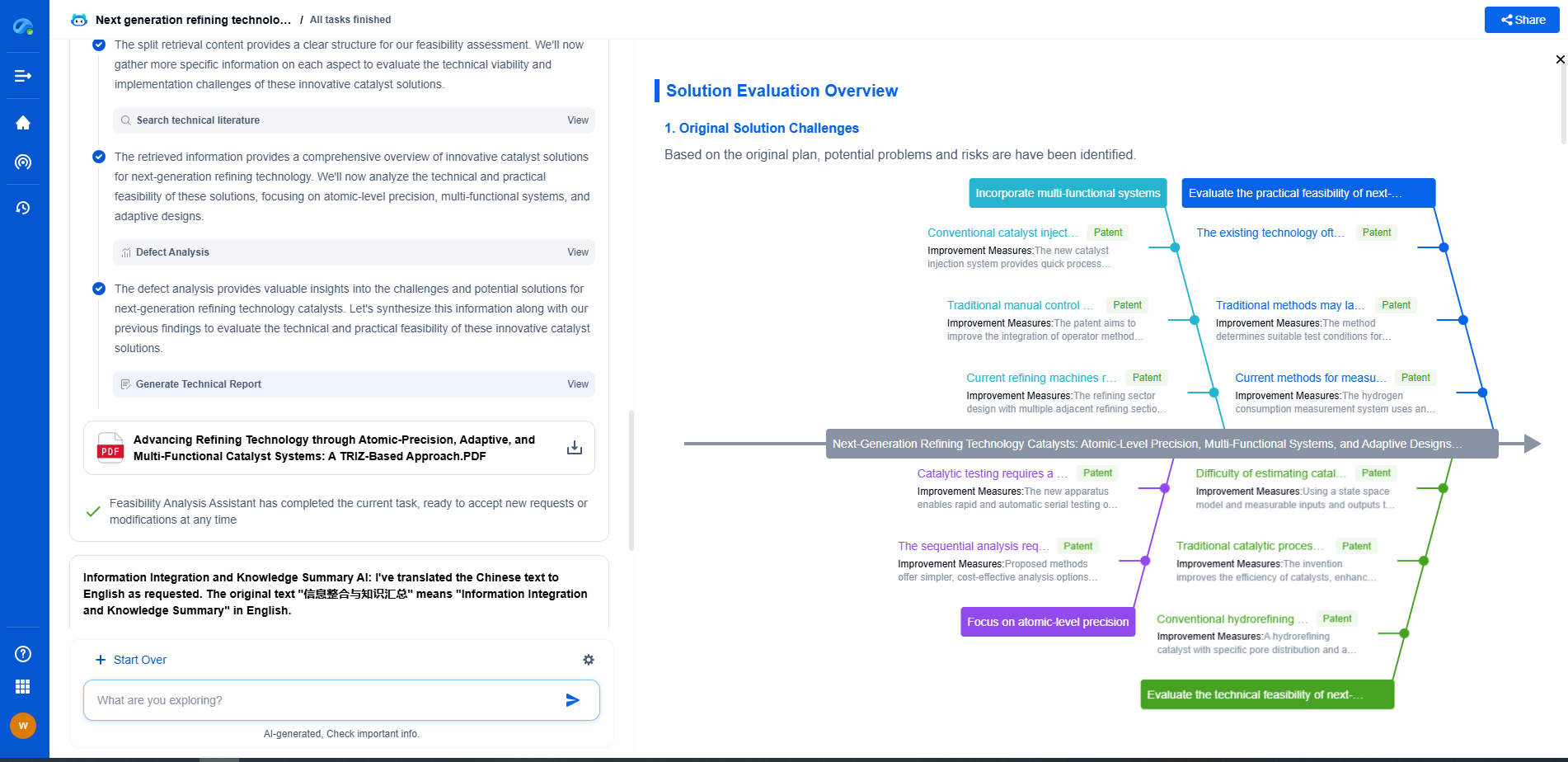How a refinery saved energy by optimizing heat exchanger cleaning intervals
JUN 19, 2025 |
In the competitive landscape of the oil and gas industry, refineries are constantly seeking ways to improve efficiency and reduce operational costs. One critical area where significant savings can be achieved is in the optimization of heat exchanger cleaning intervals. Heat exchangers play a vital role in the refining process by facilitating heat transfer between fluids, but over time, they can become fouled, resulting in decreased thermal efficiency and increased energy consumption. By optimizing the cleaning schedule for these essential components, a refinery can save energy, reduce emissions, and enhance overall operational performance.
Understanding Heat Exchanger Fouling
Heat exchanger fouling is the accumulation of unwanted materials on heat transfer surfaces, which impedes heat flow and reduces efficiency. Fouling can occur due to various factors, including chemical reactions, corrosion, or the deposition of suspended solids. This build-up leads to increased energy consumption as the system requires more energy to maintain the desired operating temperatures. Consequently, energy costs rise, and the overall carbon footprint of the refinery increases.
The Importance of Optimizing Cleaning Intervals
Traditionally, refineries have relied on fixed schedules for cleaning heat exchangers, often based on conservative estimates to avoid the risk of severe fouling. However, this approach can lead to unnecessary cleaning, increased downtime, and wasted resources. By optimizing cleaning intervals, refineries can determine the precise timing for maintenance, balancing the cost of cleaning with the energy savings achieved from improved heat exchanger performance.
Data-Driven Approach to Optimization
Recent advancements in data analytics and sensor technology have enabled refineries to adopt a more data-driven approach to optimizing heat exchanger cleaning intervals. By continuously monitoring key performance indicators such as temperature differentials, pressure drops, and flow rates, refineries can gain real-time insights into the condition of their heat exchangers. Predictive maintenance models can then be used to forecast fouling trends and identify the optimal cleaning schedule.
Case Study: A Refinery Success Story
Consider the example of a major refinery that implemented a data-driven strategy to optimize its heat exchanger cleaning intervals. By installing sensors and employing advanced analytics, the refinery was able to monitor the performance of its heat exchangers with unprecedented accuracy. Over a six-month period, the refinery reduced its energy consumption by 15% and saved over $500,000 in operational costs by aligning cleaning activities with actual fouling conditions rather than relying on predetermined schedules.
Challenges and Solutions
While optimizing cleaning intervals offers significant benefits, it is not without its challenges. The initial investment in sensors and data analytics tools can be substantial, and there is a learning curve associated with interpreting the data effectively. However, these challenges can be overcome by starting with a pilot project on a small scale, allowing the refinery to refine its approach before scaling up.
Conclusion
Optimizing heat exchanger cleaning intervals represents a significant opportunity for refineries to enhance energy efficiency, reduce costs, and minimize their environmental impact. As demonstrated by the success of refineries that have embraced data-driven approaches, the benefits far outweigh the challenges. By leveraging modern technology and adopting a proactive maintenance strategy, refineries can ensure that their heat exchangers operate at peak efficiency, contributing to a more sustainable and profitable future for the industry.
Discover Patsnap Eureka: AI Agents Built for Scientific Innovation
Whether you're designing the next generation of refining technologies or analyzing catalysts and process flows, keeping up with rapidly evolving research and IP data in petroleum processing is no easy task.
Patsnap Eureka, our intelligent AI assistant built for R&D professionals in high-tech sectors, empowers you with real-time expert-level analysis, technology roadmap exploration, and strategic mapping of core patents—all within a seamless, user-friendly interface.
Ready to accelerate your innovation process and make smarter, faster decisions? Discover Patsnap Eureka today and unlock the full power of confident, AI-driven innovation.
- R&D
- Intellectual Property
- Life Sciences
- Materials
- Tech Scout
- Unparalleled Data Quality
- Higher Quality Content
- 60% Fewer Hallucinations
Browse by: Latest US Patents, China's latest patents, Technical Efficacy Thesaurus, Application Domain, Technology Topic, Popular Technical Reports.
© 2025 PatSnap. All rights reserved.Legal|Privacy policy|Modern Slavery Act Transparency Statement|Sitemap|About US| Contact US: help@patsnap.com

